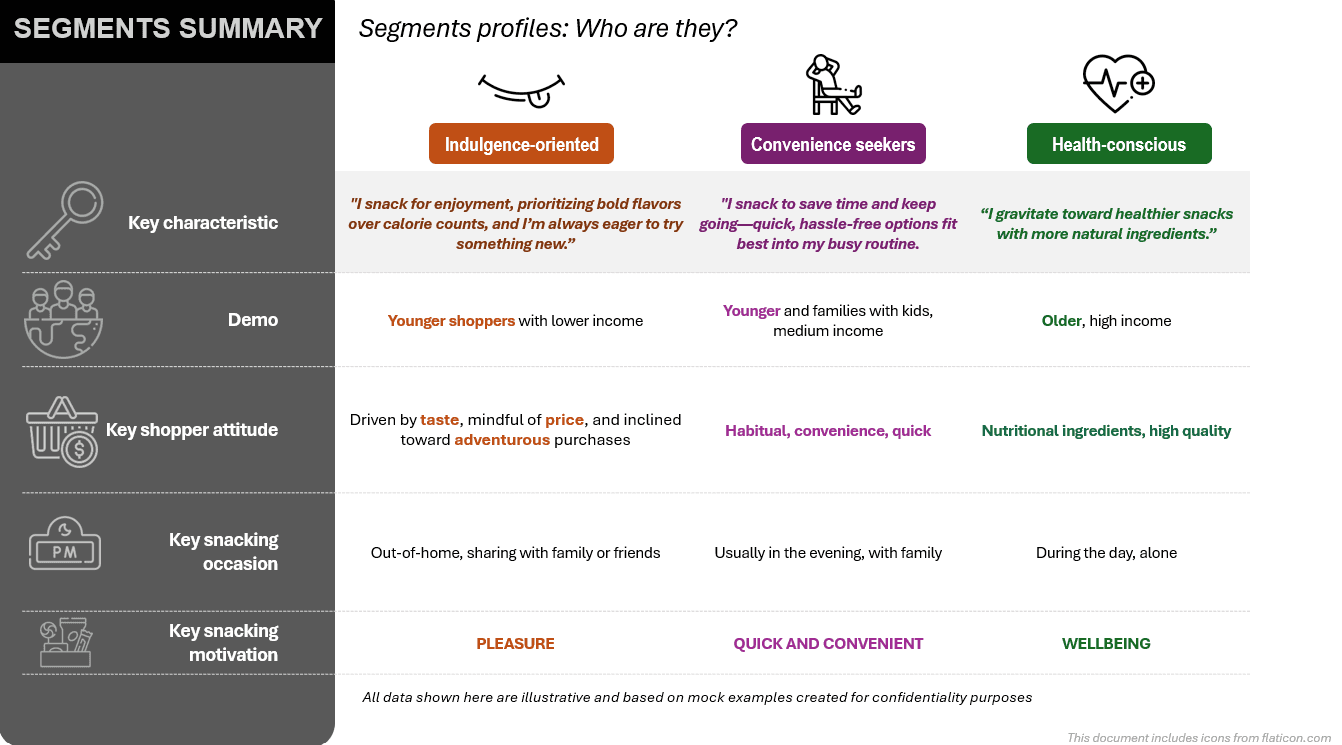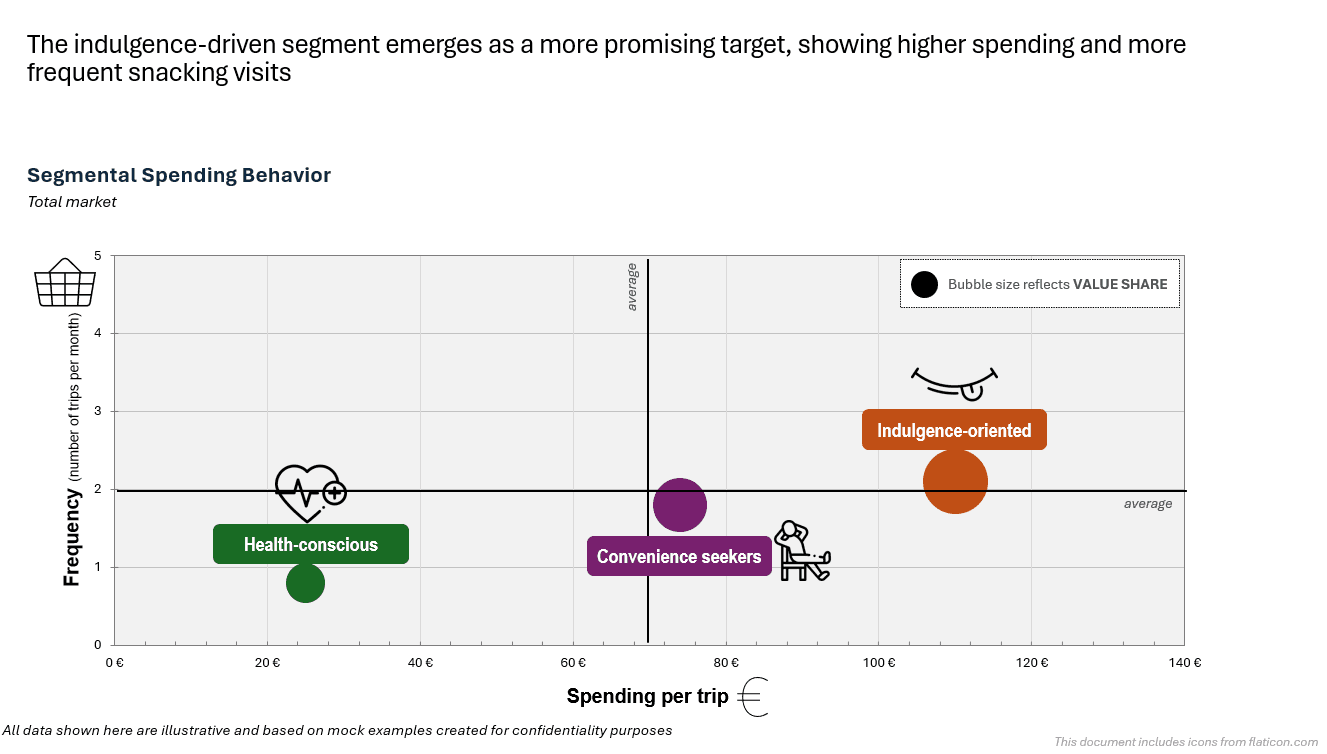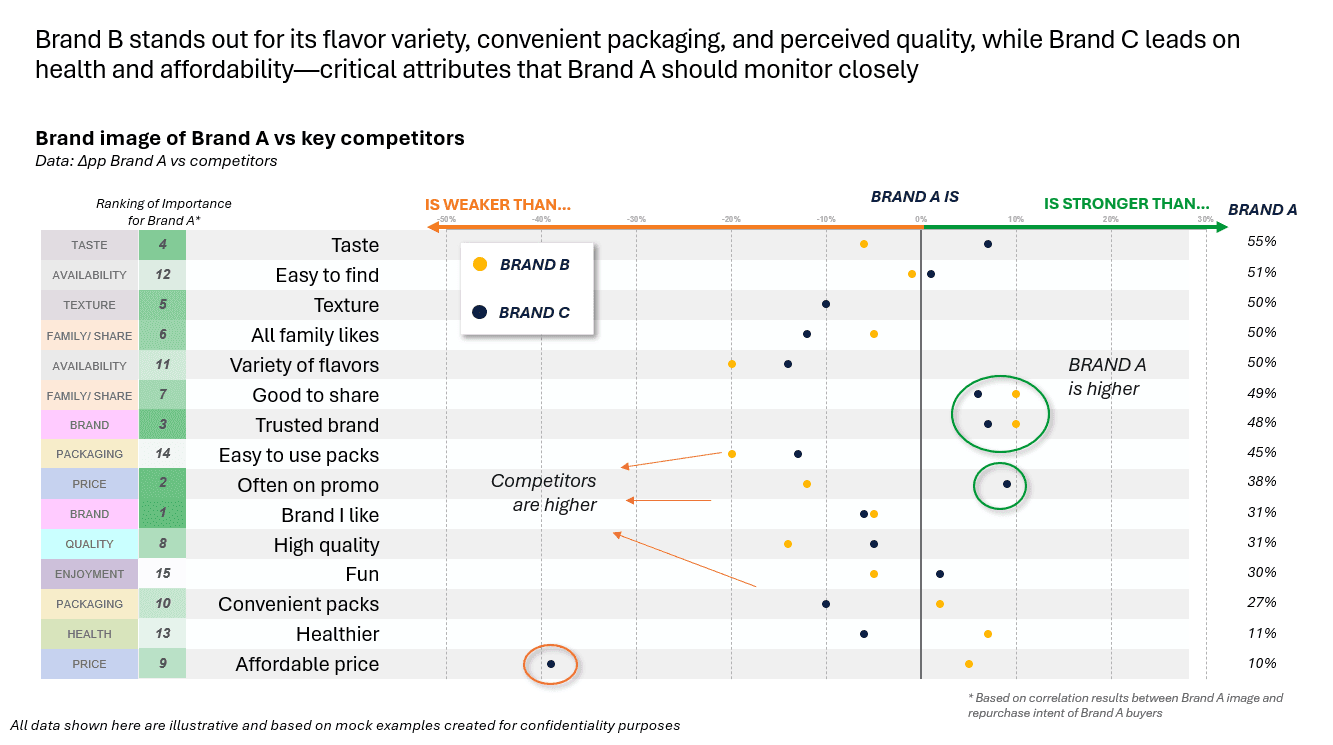Multicountry Consumer Snacking Segmentation Study – Brand A (FMCG Company)
Objective
To identify distinct consumer segments based on snacking habits, motivations, and behaviours, supporting the brand’s new product development and positioning strategy.
Methodology
-
Online survey with over 4000 consumers across Italian, German and French markets
-
Quantitative segmentation analysis based on behavioural and attitudinal variables, exploring:
-
Key snacking attitudes and overall food habits
-
Category and brand perceptions across major snacking types
-
Barriers and triggers influencing purchase decisions
-
Consumption occasions — when, where, and with whom snacks are consumed
-
Innovation opportunities within the snacking category
-
Profiling of each segment by demographics, motivations, and product preferences.
Key Findings (anonymised & illustrative)



- Clear differentiation between health-focused, convenience-driven, and indulgence-oriented snackers across countries.
- Taste, variety, and affordability remained universal drivers of purchase.
- Health-conscious consumers prioritised nutritional value and clean ingredients.
- Convenience-seeking consumers emphasised availability and ease of access.
- Indulgence-oriented prioritised taste and convenience.
- Distinct snacking occasions emerged across markets — in France, snacking was most common in the afternoon, often as a small indulgence or energy boost; whereas in Germany, the evening was the primary snacking moment, typically associated with relaxation or social activities with family.
Actionable Recommendations
- Tailor innovation strategy to meet each segment’s needs.
- Refine packaging and messaging to emphasise “clean ingredients” or “on-the-go convenience,” depending on the segment you plan to target.
- Introduce limited-time flavour launches to maintain novelty and engagement, especially for the indulgence segment.
Role & Skills Demonstrated
Survey design · Quantitative analysis · Segmentation modelling · Insight synthesis · Strategic storytelling